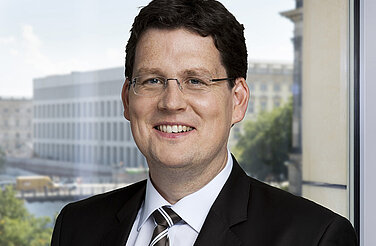This content is also available in: German
Turnaround for the Energiewende
Taking stock of 2014: Greenhouse gas emissions abate/Renewables are most important power/Electricity usage and coal-fired power production decline/Power prices fall slightly
6 January 2015. The Energiewende is on solid footing: In 2014, there were positive developments in many key areas. For the first time ever on an annual basis, renewables were the most important source of electrical energy in the power mix in Germany, ousting lignite coal from first place with a 27.3 percent share of German energy usage. At the same time, electric power consumption fell by 3.8 percent - a sign that investments in energy efficient appliances and manufacturing systems are paying off, as the German economy grew fairly strongly at 1.4 percent. Owing to the favourable developments in renewable energy and electricity usage, the climate-adverse use of hard coal for power production sank to its second-lowest level since 1990. Together with a mild winter, this led to a considerable decrease in CO2 emissions from electricity, which now are at their lowest level since 1990. These are the key findings of Agora Energiewende’s analysis, “The Energiewende in the Power Sector: State of Affairs 2014,” which Agora published today.
“In 2013, we could still see an increase in the undesirable emission of carbon dioxide, parallel to the rise in renewables. At the time, we called this the Energiewende Paradox. Today we can say that this trend has been broken – energy from renewables continues to grow and greenhouse gas emissions are decreasing again,” said Dr. Patrick Graichen, Director of Agora Energiewende.
The main reason for lower CO2 emissions, according to the analysis, is that after pushing gas-fired power plants out of the market, renewables are now crowding out climate-damaging hard-coal power plants. “Hard coal and gas are the losers in the power mix. Lignite-fired power plants, on the other hand, are still producing at a high level,” said Graichen.
Wholesale power prices on the Leipzig power market fell to a record low in 2014 of 33 euros per megawatt-hour (2013: 38 euros). The German power market was therefore very attractive for neighbouring countries. They imported on balance 34.1 terawatt-hours, amounting to 5.6 percent of all power produced in Germany. That was a new record for German electricity exports, although only slightly above that of 2013, rising by 0.3 terawatt-hours. “We appear to have reached the maximum possible in electricity exports,” said Graichen.
The trend toward rising electricity prices was also halted, and electricity prices for both private and for commercial and industrials customers will fall in 2015 compared to 2014. The reason is based on two factors already determined for 2015: Forward contracts for 2015 purchases of electricity on the power exchange as well as the renewable energy surcharge are lower than in 2014. Many electricity distributors will pass these advantages on to their customers.
On the other hand, the electricity system has become more flexible. This is evident in the number of hours of negative power prices. These occurred for 64 hours during 2014, the same number as in 2013, although the share of wind and solar power had increased significantly. That is because fewer conventional power plants had to incorporate electricity from more renewable energy installations compared to two years before. “That this was successful is perhaps the best news for the power system,” said Graichen. “It shows that even a system with a lot of wind and solar power is technologically manageable. As far as flexibility is concerned, a few things still need to happen on the technical and regulatory side, as the share of wind and solar power will continue to rise.”
The analysis, “The Energiewende in the Power Sector: State of Affairs 2014” contains numerous diagrams and snapshots of the German electricity system and shows the important trends in a timeline of the previous years. The publication is available for free download below.

